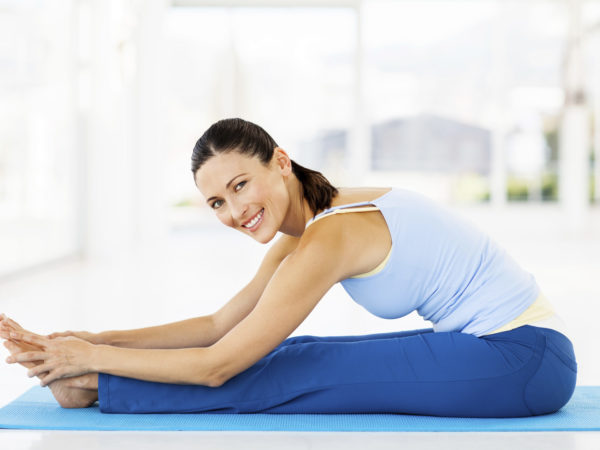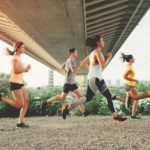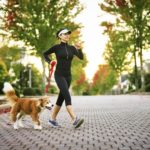Seated Forward Bend Pose

Description & History
The Seated Forward Bend, known as Paschimottanasana in Sanskrit, stretches the neck, back, hamstrings and calves. The pose name comes from the words paschima meaning west or back, uttana meaning intense stretch or straight, and asana meaning posture.
How to Perform the Seated Forward Bend
- Begin by sitting on the floor with legs straight in front of you. Feet should be flexed with your toes pointed to the ceiling.
- Raise your arms above your head and lengthen your spine. Exhale, and slowly bend forward at the hips keeping your buttocks and heels connected to the ground as you bend.
- Bend at your hips until you can no longer bend. If you can, grasp the sides of your feet with your hands. If you are unable to reach your feet, bend your elbows until your forearms rest comfortably on the floor and grasp your legs.
- Breathe evenly, and on every exhale, bend further toward your legs.
- Stay in the pose between one and three minutes. To come out of the pose, inhale and lift the torso away from the thighs, straightening your elbows if they were bent.
Video: How to Perform the Seated Forward Bend Pose
Potential Health Benefits
- Induces relaxation, relieves stress and lifts mood
- Stretches the spine, shoulders, lower back, and hamstrings
- Stimulates organs including intestines, kidneys, liver, ovaries and uterus
- Helps relieve symptoms of menstrual discomfort
A 2012 study published in the International Journal of Yoga looked into the possibility that certain yoga poses, or asanas, could be practiced to reverse inguinal hernias in males. The yoga poses studied, including the Seated Forward Bend, were selected based on their effects to compress the inguinal canal (a weak spot in the lower abdomen through which genital structures pass from the body’s interior) as well as strengthen the abdominal muscles. After three months, the study concluded and results showed that of the 19 males who participated in the study, all 19 experienced pain-relief in connection with their inguinal hernias after the conclusion of the study.
Modifications & Variations
To alleviate any discomfort due to compression of the buttocks, place a folded blanket or yoga mat under your body.
If you are a beginner who has limited flexibility, you can rest on your forearms while in the pose. This can help limit pressure on the lower back and still help you achieve the same benefits of the pose. Another option is to use a stretching strap that runs under your feet and is held in your hands to achieve a greater stretch.
If you are an advanced practitioner who can reach your feet while in the Seated Forward Bend, one modification is to extend your arms out beyond your feet. Keep your palms flat on the floor as you are in the pose. The goal of the Seated Forward Bend is to touch your forehead to your legs while keeping a straight back.
Another variation is the Urdhva Mukha Paschimottanasana in which you lie on your back then exhale while bending your knees into your body. On the next inhale, extend your heels toward the ceiling and then exhale, bringing your feet to the floor above your head. Only advanced practitioners should perform this inverted version of the Seated Forward Bend due to its risk of back injury.
Precautions
It is normal to feel tightness in your hamstrings while performing the Seated Forward Bend, but do not force yourself to bend more than is comfortable. Also, it is important to move slowly in the pose and never “bounce” to achieve a greater stretch. Bouncing during the pose can lead to muscle, tendon and ligament injury.
Consult with your physician before performing the pose if you have any of the following:
- Back injury including herniated discs
- Diarrhea
- High blood pressure or low blood pressure
- Breathing problems like asthma or emphysema
Related Poses
- Dandasana (Staff Pose)
- Uttanasana (Standing Front Bend)
- Kurmasana (Tortoise Pose)
- Ardha Matsyendrasana (Half Lord of the Fishes Pose)
Reviewed by: James Nicolai, M.D., on May 21, 2013
Sources
Alagesan, Jagatheesan, Suthakar Venkatachalam, Anandbabu Ramadass, and Sankar B. Mani. “Effect of yoga therapy in reversible inguinal hernia: A quasi experimental study.” International journal of yoga 5, no. 1 (2012): 16.









